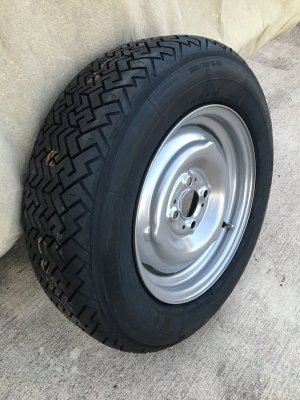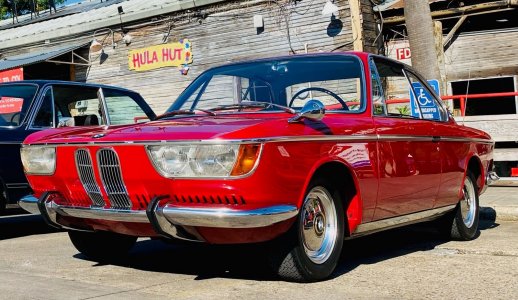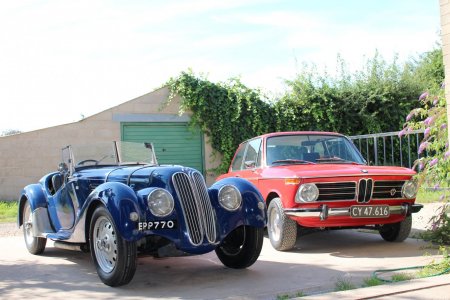Er - i sort of do, but i don't think you will like it.
Sorry - but the answer is get some 14" wheels. I'm afraid the ride will be badly compromised and your chassis isn't built to drive nicely with 55% profile tyres. They are going to track and make your steering slower and more heavy. The larger rear wheel is going to effect the balance of the car and make it tend toward understeer. Any form of predictable, progressive handling went out the window with that wide square shouldered fat rear foot print. sorry.
However if you liked the look of 16" wheels, which is the only real reason to percevier with the handling and ride deficiencies of that set up, (unless you are actually on a perfectly smooth race track), then the closest you can get to a tyre that has any sympathy for your car geometry it would be the Pirelli P7. it is a mid 1970s tyre so is deigned to work in conjunction with the geometry of the super cars of the day. (including the BMW M1) It will handle better than a more modern tyres of that period would do on your car. but really a more rounded shoulder and taller side wall with less foot print will be the best.
Buy classic PIRELLI CINTURATO P7 Tyres online. Classic Low-profile extra wide sports tyres developed in the 1970s by Pirelli for classic performance cars!

www.longstonetyres.co.uk
Even on modern cars these silly 20" wheels are fashion over function. A modern Merc with big fat AMG wheels would make a much nicer car to drive on the road on its standard wheels. Diminishing the side wall height just ruins the ride. Wider front tyres make the steering dreadful, but a modern car will overcome the short fall by adding swaths of caster which are overcome again by clever modern steering. You only really get extra grip because the modern suspention is stiffer and doesn't travel as far, so the car doesn't lean in the corners, while at the same time adding adverse camber as the car leans a little bit to keep the wide foot print in contact with the road, with an old car as it leans it picks up most of the foot print off the road and you turn a corner into a series of twitches.
what people do to a race car doesn not make a nice road car.
I am sorry that is all quite brutal. However if you are going to stick 16" the Pirelli P7 will be the best option. I got heavily involved with the Countach fraternity, as they were having difficulty because the only tyres available for their ridculously wide (though really cool) wheels and tyres were a more modern tyre carcass which did not suit the earlier Countach. When we managed to get the P7 made again, they were over the moon, and there was streams of coments about how much better they were to drive, now that they could fit the P7 again.
have a look at this thread
Hi Team Please let me know your thoughts on Countach tires. I know the main thought is they are expensive. they are always going to be because...

www.ferrarichat.com
and again sorry for not wrapping it up in a bit more cotton wool.
View attachment 185701

 www.longstonetyres.co.uk
www.longstonetyres.co.uk







